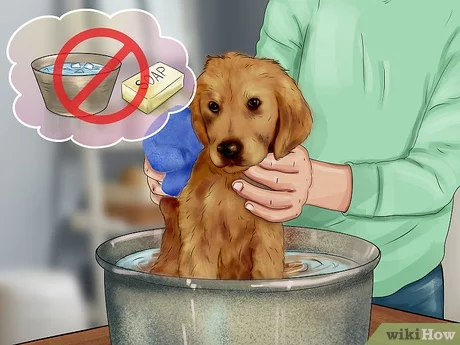Contents
Fever in dogs: treating a dog with a fever
Fever is a syndrome defined as an abnormal rise in body temperature associated with several general clinical signs. This is called a febrile syndrome. It is a reaction mechanism in response to an attack on the organism. There are several different causes that can cause fever in dogs. Thus, it is necessary to contact your veterinarian who can set up an appropriate treatment.
Mechanism of fever
So-called homeothermic (or endothermic) animals have mechanisms that allow them to regulate their body temperature permanently. They are said to be homeothermic because it means that they produce the heat that allows them to maintain their normal body temperature on their own. Maintaining this temperature properly is very important to preserve the body’s vital functions. The hypothalamus is a part of the brain that helps regulate this body temperature in mammals. It works like a thermostat.
To know if a dog has a fever, it is important to know its normal body temperature: between 38 and 38,5 / 39 ° C. Below these values, the animal is said to be in hypothermia and above in hyperthermia. Hyperthermia is one of the clinical signs of fever. To take your dog’s temperature, it is necessary to have a thermometer and to take the rectal temperature. The temperature of the truffle is not a good indicator.
During an episode of fever, the hypothalamus is stimulated by agents that raise the temperature, these are called pyrogens or pyrogens. External pyrogens (components of bacteria, viruses, etc.) are the agents which will stimulate the cells of the immune system to produce a mediator (or internal pyrogen) which will itself stimulate the hypothalamus. This is why we have a fever, just like our pets when we have an infection, with bacteria for example. By wanting to fight this infection, the immune system will want to defend itself and release pyrogenic substances which will then increase our body temperature in order to eliminate the infectious agent. The body will thus increase its thermostat to a higher temperature.
Causes of a fever in dogs
Since fever is a body’s defense mechanism, there are many causes for a febrile syndrome. Indeed, it is not always an infection or inflammation. Here are some possible causes of fever in dogs.
Infection / inflammation
A state of fever is very often linked to an infectious cause. Thus, bacteria, viruses, fungi or even parasites can be the cause. It can also be an inflammatory disease.
Cancer
Some cancerous tumors can also cause fever in dogs.
Allergic reaction
An allergic reaction, for example to a drug, can cause a fever.
Autoimmune disease
Autoimmune disease results from immune dysfunction. Indeed, the body will start attacking its own cells, mistaking them for foreign elements. Persistent hyperthermia can result. This is the case, for example, with systemic lupus erythematosus in dogs.
Some drugs
Certain drugs can cause hyperthermia in animals, for example certain drugs used during anesthesia.
Hypothalamus dysfunction
Sometimes, in rare cases, a fever can also be the consequence of a dysfunction of the hypothalamus, the regulating center of the body temperature. Thus, a tumor or even a lesion of the brain can cause its dysfunction.
Heat stroke / excessive exercise: hyperthermia
Dogs are very sensitive to heat and on hot summer days they can get what is called heat stroke. The dog’s body temperature can then exceed 40 ° C. Be careful, this is indeed hyperthermia and not fever. Heat stroke is an emergency. You must then wet your dog (be careful not to use cold water too quickly so as not to cause a thermal shock) to cool it and place it in a cool place to lower its temperature while waiting for it. take urgently to your veterinarian. Heat stroke can also occur with intense physical exercise, especially if the outside temperature is high.
What to do in case of fever?
When a dog is hot, all he can do is gasp to lower his internal temperature. Indeed, it does not sweat like humans, except through the pads. In the event of heatstroke, the dog will especially pant, whereas it will not do so in the event of a fever. In general, in case of febrile syndrome, other clinical signs appear such as loss of appetite or weakness. It is these general signs that will alert the owner.
If you think your dog has a fever, take his rectal temperature. If he is indeed hyperthermic, you should contact your veterinarian without delay. Also note any other symptoms that are present. The latter will carry out an examination of your animal and may do some additional examinations to determine the cause. Treatment will then be put in place to eliminate the cause of the fever. In addition, if it is a heat stroke, cool your dog before taking him to your veterinarian urgently.
Be careful, it is very important that you never give your dog medicines for human use against fever. Indeed, the latter can be toxic to animals. You should therefore contact your veterinarian. Also, do not try to cool your pet if he has a fever. It is only in the event of heat stroke that an emergency cooling is necessary.










